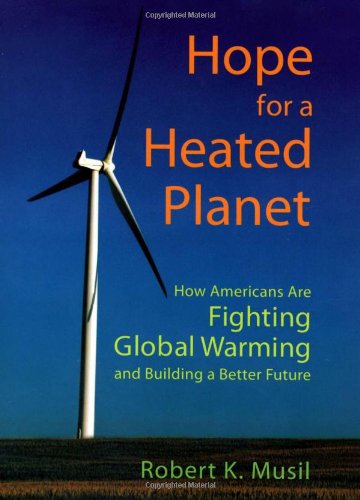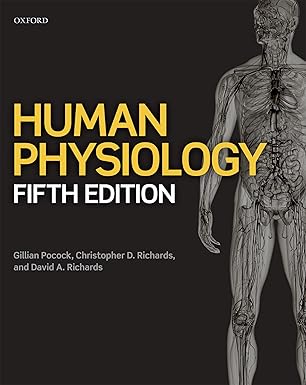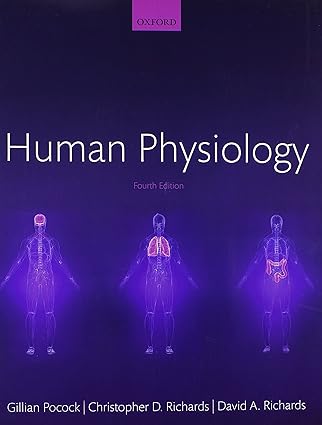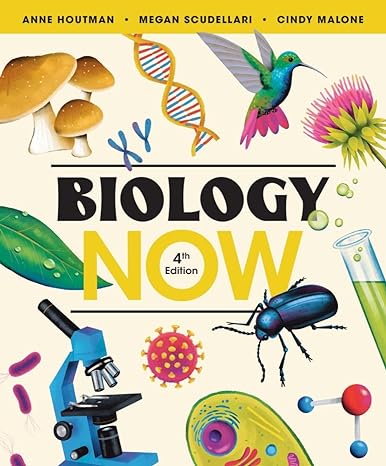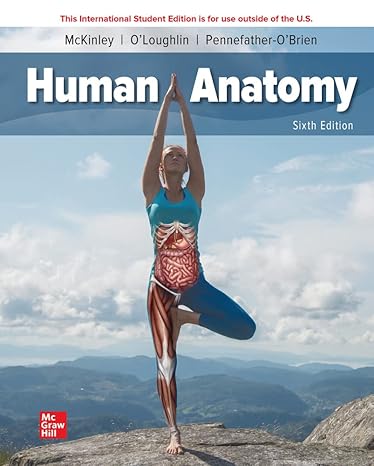10 H O P E F O R A H E A T E D P L A N E T Chapter 4, “Framing and Talking about Global Warming,” looks at how best to understand, describe, and present our climate problem. In public health, how an issue is looked at, named, and what parts are focused on may be critical to success. Public health campaigns worked for years to get the public to understand and agree that smoking illnesses were more re- lated to a powerful tobacco industry pushing an addictive substance than to the “weakness” of the individual smoker. The chapter addresses sharp cri- tiques of the environmental movement by those like Michael Shellenberger and Ted Nordhaus in “The Death of Environmentalism.” They have argued that our lack of progress results from the failure of the nation’s biggest environmental organizations to mount bold appeals, effective campaigns, or to get beyond cautious Capitol Hill incrementalism. These critics believe that the very term “the environment” is a problem. Moreover, they say that big green organizations have failed to excite constituencies beyond hard- core environmentalists or to engage the values and passions of ordinary Americans.6 I agree with some of this criticism. But I argue that the big green groups had already changed well before the latest blasts. They have been remarkably effective, especially given the many obstacles to progress. For years, the big greens have been reframing climate change as a human health issue, as a threat to national security, and as an opportunity to find energy solutions that can revive American communities and our economy. Here I also show that modern medicine and microbiology allow us to un- derstand that the environment is not just a thing outside us. It is within us. Scientific studies show that even tiny amounts of pollutants travel the globe and end up inside our bodies and our cells. That’s why I examine carefully the effectiveness of environmental health campaigns against mercury and air pollution that stalemated the most reactionary forces during the Bush years. These victories belie the charge that environmental groups have ne- glected grassroots efforts and bold calls to action. In chapter 5, “Assessing the Big Greens,” in order to set the record straight and to decide whether Washington green groups should be the core of a renewed climate change movement or be simply left behind, I offer my best judgment of the mainstream national environmental orga- nizations in light of their most serious critics. In our public health assess- ment, we need to determine whether a social movement that can blunt the power of the carbon lobby and arouse the nation is possible. I give a short history of what big greens have actually done to make climate change an 14 H O P E F O R A H E A T E D P L A N E T Climate change will surely sink again beneath the waves of public con- sciousness and media attention. The war in Iraq, which derailed the presi- dent’s second term, remains a major concern for Americans. So does a de- teriorating economy. But climate change is now with us. It will not go away. Each time it reappears, I am convinced that more Americans than ever must understand and deal with it. Such a task will require a more positive vision of the future from environmentalists and from our leaders. And surely an even broader climate change movement that addresses greater numbers of ordinary Americans will be essential. As citizens, you and I need to know the facts and make our own deci- sions. But, most of all, we need to believe that something can be done. As we have seen with the war in Iraq, changing understanding, attitudes, be- havior, and political preferences takes time. But it can be done. Throughout this book, drawing on my own experiences, I want to look at global climate change, as I have at war, as a typical, if huge, public health problem. My approach reflects my background as an activist, teacher, and en- gaged journalist; my training in public health; and my years at Physicians for Social Responsibility (PSR). At PSR I learned that a combination of moral passion—the stuff of activism, preaching, and teaching—works best when yoked to the credibility of hard data. You need a hypothesis rooted in sci- entifi c analysis. There must be a demonstrable correlation between the problem described and the solutions offered. You also should rely on some ancient verities: an ounce of prevention is worth a pound of cure; a stitch in time saves nine; and, the admonition at the core of all medicine and healing, since Hippocrates: “First, do no harm.” 4 Public health finds the causes and solutions to health problems that affect large populations. The cures of clinical medicine or the steps taken solely by individuals are not enough. Only prevention—getting to the root of the problem and bring- ing about significant changes in attitudes, behavior, social structures, and public policy—will ultimately work. The public health approach must make sure there is sufficient measurement, data, biological plausibility, and real or potential human harm to support the diagnosis of a major health con- cern. Then, once the causal factors are assessed and determined, an action plan is designed and carried out. With human life and human society at stake, simply understanding a crisis is insufficient. The ethical thing is to take action.5 My favorite story in the history of public health is the classic tale of
چکیده فارسی
10 H O P E F O R A H E A T E D P L A N E T فصل 4، "قالب بندی و صحبت در مورد گرمایش جهانی" به بهترین روش برای درک، توصیف و ارائه مشکل آب و هوای ما می پردازد. در بهداشت عمومی، نحوه نگاه کردن به یک موضوع، نامگذاری، و تمرکز بر روی چه بخش هایی ممکن است برای موفقیت بسیار مهم باشد. کمپینهای بهداشت عمومی سالها کار کردند تا مردم را درک کنند و به توافق برسند که بیماریهای سیگار بیشتر به یک صنعت قدرتمند دخانیات مربوط میشود که یک ماده اعتیادآور را فشار میدهد تا «ضعف» فرد سیگاری. این فصل به انتقادات تند کسانی مانند مایکل شلنبرگر و تد نوردهاوس در «مرگ محیط گرایی» از جنبش زیست محیطی می پردازد. آنها استدلال کردهاند که عدم پیشرفت ما ناشی از شکست بزرگترین سازمانهای زیستمحیطی کشور در ایجاد درخواستهای جسورانه، کمپینهای مؤثر، یا فراتر رفتن از افزایش گرایی محتاطانه کاپیتول هیل است. این منتقدان معتقدند که خود اصطلاح "محیط زیست" یک مشکل است. علاوه بر این، آنها میگویند که سازمانهای سبز بزرگ نتوانستهاند حوزههای انتخابیه فراتر از طرفداران سختگیر محیطزیست را به هیجان بیاورند یا ارزشها و علایق آمریکاییهای عادی را درگیر کنند.6 من با برخی از این انتقاد موافقم. اما من استدلال میکنم که گروههای سبز بزرگ قبل از آخرین انفجارها تغییر کرده بودند. آنها بهویژه با توجه به موانع زیادی که برای پیشرفت وجود دارد، بسیار مؤثر بودهاند. برای سالها، سبزهای بزرگ تغییر آب و هوا را به عنوان یک موضوع سلامت انسان، به عنوان تهدیدی برای امنیت ملی، و به عنوان فرصتی برای یافتن راهحلهای انرژی که میتواند جوامع آمریکایی و اقتصاد ما را احیا کند، تغییر دادهاند. در اینجا من همچنین نشان میدهم که پزشکی و میکروبیولوژی مدرن به ما این امکان را میدهد که درک کنیم که محیط زیست فقط چیزی خارج از ما نیست. درون ماست. مطالعات علمی نشان میدهد که حتی مقادیر بسیار کمی از آلایندهها در سراسر جهان سفر میکنند و به داخل بدن و سلولهای ما میرسند. به همین دلیل است که من کارآیی کمپین های بهداشت محیطی را در برابر جیوه و آلودگی هوا که ارتجاعی ترین نیروهای را در طول سال های بوش به بن بست رساندند، به دقت بررسی می کنم. این پیروزی ها این اتهام را که گروه های محیط زیست از تلاش های مردمی و فراخوان های جسورانه برای اقدام نادیده گرفته اند، رد می کند. در فصل 5، "ارزیابی سبزهای بزرگ"، به منظور درست کردن رکورد و تصمیم گیری در مورد اینکه آیا گروه های سبز واشنگتن باید هسته اصلی یک جنبش تغییر آب و هوا باشند یا به سادگی پشت سر گذاشته شوند، بهترین قضاوت خود را در مورد جریان اصلی ملی ارائه می کنم. سازمان های زیست محیطی در پرتو جدی ترین منتقدان خود. در ارزیابی سلامت عمومی ما، باید تعیین کنیم که آیا یک جنبش اجتماعی که بتواند قدرت لابی کربن را کمرنگ کند و ملت را بیدار کند، امکان پذیر است یا خیر. من یک تاریخچه کوتاه از آنچه سبزهای بزرگ در واقع انجام داده اند برای ایجاد تغییرات اقلیمی ارائه می کنم. تغییر اقلیم مطمئناً دوباره در زیر امواج آگاهی عمومی و توجه رسانه ها فرو خواهد رفت. جنگ در عراق که دور دوم ریاست جمهوری را از مسیر خود خارج کرد، همچنان یکی از نگرانی های اصلی آمریکایی هاست. اقتصاد رو به وخامت هم همینطور. اما تغییرات آب و هوایی اکنون با ما همراه است. به هیچ جایی نخواهد رفت. هر بار که دوباره ظاهر می شود، من متقاعد شده ام که آمریکایی های بیشتری از همیشه باید آن را درک کنند و با آن مقابله کنند. چنین کاری مستلزم دید مثبت تری نسبت به آینده از سوی محیط بانان و رهبران ما است. و مطمئناً یک جنبش حتی گستردهتر تغییر آب و هوا که تعداد بیشتری از آمریکاییهای عادی را مورد توجه قرار دهد، ضروری خواهد بود. به عنوان شهروند، من و شما باید حقایق را بدانیم و تصمیمات خود را بگیریم. اما بیشتر از همه باید باور کنیم که کاری میتوان انجام داد. همانطور که با جنگ در عراق دیدیم، تغییر درک، نگرش، رفتار و ترجیحات سیاسی به زمان نیاز دارد. اما می توان انجامش داد. در سرتاسر این کتاب، با تکیه بر تجربیات خودم، میخواهم به تغییر آب و هوای جهانی، همانطور که در جنگ دارم، بهعنوان یک مشکل معمولی و البته بزرگ سلامت عمومی نگاه کنم. رویکرد من نشان دهنده پیشینه من به عنوان یک فعال، معلم و روزنامه نگار متعهد است. آموزش من در بهداشت عمومی؛ و سالهای من در پزشکان برای مسئولیت اجتماعی (PSR). در PSR یاد گرفتم که ترکیبی از اشتیاق اخلاقی - موادی از فعالیت، موعظه و تدریس - زمانی که به اعتبار دادههای سخت متصل شود، بهترین کار را دارد. شما به یک فرضیه نیاز دارید که ریشه در تحلیل علمی داشته باشد. باید یک همبستگی قابل اثبات بین مشکل توصیف شده و راه حل های ارائه شده وجود داشته باشد. شما همچنین باید به برخی حقایق باستانی تکیه کنید: یک اونس پیشگیری ارزش یک پوند درمان را دارد. یک بخیه در زمان نه را نجات می دهد. و از بقراط، توصیه ای که در هسته اصلی همه داروها و شفاها قرار دارد: "اول، ضرر نکنید." 4 بهداشت عمومی علل و راهحلهای مشکلات سلامتی را که جمعیت بزرگی را تحت تأثیر قرار میدهند، پیدا میکند. درمان های پزشکی بالینی یا اقداماتی که صرفاً توسط افراد انجام می شود کافی نیست. تنها پیشگیری - ریشهیابی مشکل و ایجاد تغییرات قابل توجه در نگرشها، رفتار، ساختارهای اجتماعی و سیاستهای عمومی- در نهایت کارساز خواهد بود. رویکرد بهداشت عمومی باید اطمینان حاصل کند که اندازهگیری، دادهها، قابل قبول بودن بیولوژیکی و آسیب واقعی یا بالقوه انسانی برای حمایت از تشخیص یک نگرانی عمده سلامت وجود دارد. سپس پس از ارزیابی و تعیین عوامل علّی، برنامه عملیاتی طراحی و اجرا می شود. در شرایطی که زندگی انسان و جامعه انسانی در خطر است، درک ساده یک بحران کافی نیست. نکته اخلاقی این است که اقدام کنید.5 داستان مورد علاقه من در تاریخ بهداشت عمومی، داستان کلاسیک
است.
ادامه ...
بستن ...
34 H O P E F O R A H E A T E D P L A N E T try to adapt, the greenhouse effect is exacerbated. Maryland ranked sev- enteenth nationally in carbon emission from power plants in a 1997 study, releasing 49.7 million tons of carbon. The largest CO2 emitters were the Herbert A. Wagner plant operated by Baltimore Gas & Electric with 12.4 mil- lion tons, BG&E’s Brandon Shores with 10 million tons, and BG&E’s Gould Street Plant with 9.2 million tons.10 Power plants also emit nitrous oxides, or NOx, a greenhouse gas that, according to the EPA, accounted for 7 percent of U.S. greenhouse gas emis- sions in 2005.11 When combined with high temperatures and volatile or- ganic compounds (VOCs), NOx also produces ozone or smog. An estimated 117 million Americans live in areas where the air is unsafe to breathe owing to ozone. In 1999, the ozone health standard adopted by EPA in 1997 was exceeded 7,200 times.12 According to a study of Maryland power plants by the Clean Air Network, Maryland also ranked seventeenth in NOx emissions with a total of 103,322 tons. According to a 2007 report, the worst emit- ters in the state now are the Chalk Point plant in Prince George’s County with 14,043 tons, the Morgantown plant of Potomac Electric Power with 13,759 tons, BG&E’s Brandon Shores with 11,893 tons, and CP Crane of BG&E in Baltimore with 7,705 tons.13 Exposure to elevated ozone levels can cause severe coughing, short- ness of breath, lung and eye irritation, and greater susceptibility to respira- tory illnesses such as bronchitis and pneumonia. Even moderately exercis- ing healthy adults can experience a 15 to more than 20 percent reduction in lung function from exposure to low levels of ozone.14 It is a special concern for asthmatics. Numerous studies have shown it causes more attacks, in- creases the need for medication and medical treatment, and results in more hospital admissions and emergency room visits.15 One study of twenty-five hospitals found that high ozone levels were associated with a 21 percent increase in ER visits for persons sixty-four years and older.16 An EPA study of Baltimore, for example, showed an increase in ozone alert days with the air quality index (AQI) over 100 on average 37.4 days per year from 1990 to 1999.17 The result? Maryland experienced 180,000 ozone-related asthma at- tacks, 1,300 hospital visits, 3,900 visits to ERs for ozone-related respiratory illnesses, and 410 hospital admissions for cardiovascular events.18 Baltimore alone suffered 86,000 asthma attacks, 630 hospital visits, 1,890 ER visits, and 200 cardiovascular hospital admissions.19 An independent study by the Maryland Nurses Association looked at data from only six major coal-fired H OME , H OME ON THE R ANGE 37 Maryland, whose watershed includes significant cattle areas upstream in Pennsylvania and within the state, is vulnerable. A study by Graczyk and others, for example, found Cryptosporidium in 60 percent of all manure samples on cattle farms in Lancaster, Pennsylvania. 35 In such bucolic areas, typical of the Chesapeake Bay watershed, cattle are allowed to roam freely in the many small streams and rivulets. As temperatures in Maryland waters increase, estuaries tend to hold less oxygen and to form stratified layers with lighter freshwater lying on top of layers of dense, heavy saltwater. The bottom layer is then cut off from almost all oxygen, a condition that NOAA recognizes as a precursor to the development of Pfiesteria. That’s an organ- ism that can change back and forth from plant to animal and infect fish, put- ting humans, especially watermen in Maryland estuaries, at risk. Dr. JoAnn Burkholder, for example, investigated fish kills in North Carolina. She and a colleague became dizzy, disoriented, and unable to speak or walk after studying samples. 36 Finally, the Eastern Shore of Maryland poses particular risks to human health, especially in the face of sea level rise, flooding, and warmer tem- peratures. It is home to the factory-style production of chickens owned or contracted by Perdue and other companies. These vast confining areas and slaughterhouses turn out large amounts of manure and other wastes—a growing source of contamination.37 Communicating local climate effects on human health and well-being and drawing on the power of place can be tricky, however. In teaching cli- mate change in the Master’s Program in Global Environmental Politics at American University, I eagerly showed an award-winning film on climate and Maryland called We Are All Smith Islanders.38 I assumed, rightly, that a number of my students would be from Maryland or have visited the Eastern Shore. What I had not counted on was that the film’s primary vehicle for localizing and humanizing the subject was interviews with Chesapeake Bay watermen. They are a fascinating, if dwindling, group. They make their liv- ing off the increasingly difficult job of fishing for crabs and oysters in the endless inlets and estuaries of the bay. To be a successful waterman requires careful observation and understanding of the many moods of the Chesa- peake, its weather, and terrain. To a person, the men and their families on screen testified that temperatures had increased and that water levels had risen and were threatening Smith Island. Climate was indeed a problem. 40 H O P E F O R A H E A T E D P L A N E T Nile was unknown in the Americas until it appeared in Queens, New York, in the summer of 1999, leading to seven deaths and numerous cases of nervous system disorders. It is uncertain how the virus that is spread by mosquitoes first arrived. But, once introduced, warmer temperatures na- tionwide allowed the disease to spread from mosquitoes to hosts, including birds and small animals, and then to humans. In the United States, West Nile virus has now been reported in every state except Oregon, Alaska, and Hawaii. Carried by the Culex pipiens mosquito, West Nile is associated with droughts. It flourishes in storm-catch basins where nutrient-rich water re- mains after a drought. The shrinking availability of water also concentrates the birds. Near water, they are often carriers of the disease because they offer more frequent blood meals to mosquitoes. In the original New York City outbreak, sixty-two New Yorkers devel- oped nervous system disease: encephalitis (brain inflammation) and me- ningoencephalitis (inflammation of the brain and surrounding membrane), with seven deaths and persistent neurological impairment for most of the remaining. Since that time, up to the end of 2005, there has been a signifi- cant increase in West Nile among Americans nationwide: 4,161 cases and 284 deaths in 2002; 9,856 cases and 262 deaths in 2003; 7,470 cases and 88 deaths in 2004. In 2005 and 2006, reported cases declined somewhat. But fatalities continued to increase to 119 and 177.43 As bad as these effects are for New York (and the rest of the country as diseases spread or other ripple effects are felt), they pale compared with more extreme scenarios and possibilities such as the huge sea level rise that would accompany the melting of the Antarctica and Greenland ice covers. As shown in An Incon- venient Truth, such a catastrophe would flood much of metropolitan New York. Some 20 million people and a significant portion of the nation’s finan- cial, media, and cultural institutions are there.44 New England But it is not just beaches and cities that are at risk. Like many East Coast natives, I have vacationed throughout New England. I was surprised, irritated, and again determined to do something when I discovered that even the cool, green granite mountains of New Hampshire are seriously affected. PSR had published and organized in New Hampshire around our very H OME , H OME ON THE R ANGE 41 first Death by Degrees report during the presidential primary season of 2000. We released its findings, along with groups like the Sierra Club and Ozone Action, at the state Capitol Building in Concord. We aimed at the media, the general public, state legislators, and the anti-Kyoto efforts of the Cham- ber of Commerce. In New Hampshire—that summer Shangri-la where va- cationers can cool off; inhale fresh, piney air; and take in woods, mountain views, and lakes—one of the worst effects of global warming, surprisingly, is respiratory disease. It is brought on and exacerbated by increasing ozone levels. Long ago, as a boy on family summer vacation in the 1950s, I had stood atop Mt. Washington, one of the highest mountains in the East. I re- member marveling at the windy, wintry air whipping at my mom and sister’s scarves and views as far off as Montreal. A generation later, I had repeated this ritual with my own kids for the views and the iconic bumper sticker (“This Car Climbed Mt. Washington”). The wintry winds and views seemed as wonderful as I had remembered. But when I released the PSR report in front of the State Capitol with Dr. Jim Herriod, a physician and Republi- can state senator, and Representative Barbara French, a Democratic state representative and nurse, I was appalled. Ozone levels regularly reported atop Mt. Washington were now failing to meet EPA standards!
ادامه ...
بستن ...
